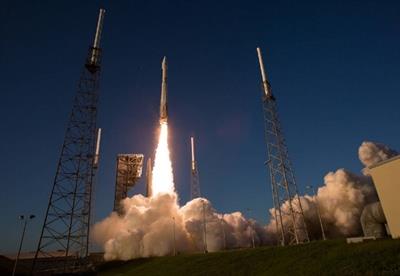Missile Design: A Comprehensive Guide to Propulsion, Aerodynamics, Weight, Flight Performance, Guidance, Lethality, System Engineering, and Development Online
Overview
This online course will cover the most important aspects of missile aerodynamics, propulsion, guidance, lethality, system engineering, and development. The prediction methods presented in the course are generally simple closed-form analytical expressions that are physics-based, to provide better insight into the primary driving parameters. Typical values of missile parameters and the characteristics of current operational missiles are discussed as well as the enabling subsystems, technologies, and the current/projected state-of-the-art. Multiple videos throughout the lectures illustrate missile system and subsystems development activities.
Learning Objectives
- Key drivers in the missile aerodynamic, propulsion, and guidance design and system engineering process
- Critical tradeoffs, methods, and technologies in missile selection and sizing to meet flight performance and other requirements
- Conceptual design prediction methods
- Launch platform-missile configuration integration
- Aerodynamic, Propulsion, and Guidance sizing examples to meet missile performance requirements
- Missile aerodynamics, propulsion, and guidance development process
- Targeting system, launch platform, and missile guidance integration
- Missile subsystems and system development process
Who Should Attend
The course is oriented toward the needs of missile engineers, system engineers, system analysts, program managers, university professors, and others working in the area of missile systems and missile technology development.
Classroom hours / CEUs: 33 classroom hours / 3.3 CEU/PDH
Overview
Type of Course: Instructor-Led Short Course
Course Level: Intermediate-Advanced
Course Length: 5 days
AIAA CEU's available: Yes
This course is also available as an on-demand short course. (Sign-In to Register.)
Course Outline
1 and 2: Overview of Missile Design, Development, and System Engineering (4 hours)
- Key drivers in missile design, development, and system engineering
- Configuration sizing methods for aerodynamics, propulsion, weight, and flight trajectory
- Integration with aircraft, ground, and ship platforms
- Robustness, lethality, guidance, navigation, flight control, observables, survivability, safety, reliability, and cost
- Missile sizing examples
- Development of missile system, subsystems, and technology
3 and 4: Missile Aerodynamics (4 hours)
- Key drivers in the missile aerodynamic design and system engineering process
- Critical tradeoffs, methods, and technologies in missile aerodynamic sizing to meet flight performance and other requirements such as configuration shaping for low observables
- Aerodynamic conceptual design prediction methods
- Launch platform-missile configuration integration
- Aerodynamic sizing examples to meet missile performance requirements
- Missile aerodynamics development process
5 and 6: Missile Propulsion (4 hours)
- Conceptual Design Prediction Methods for turbojet, ramjet, and solid propellant rocket propulsion
- Key drivers in missile propulsion design, development, and system engineering
- Critical tradeoffs, methods, and technologies in missile propulsion system sizing to meet flight performance and other requirements such as observables, safety, reliability, and cost
- Launch platform-missile propulsion integration
- Propulsion sizing examples to meet missile performance requirements
- Missile propulsion system and technology development process
7 and 8: Missile Weight (3.5 hours)
- Conceptual Design Methods for Predicting Missile System Weight and Subsystems Weight (e.g., Rocket Motor, Structure, Warhead, Power Supply, Radome)
- Benefits of a Light-Weight Missile (Production Cost, Firepower, Expeditionary Warfare, Mission Flexibility, Size, Logistics Cost, Observables)
- Missile Structure and Insulation Materials
- Missile Airframe Manufacturing Processes
- Design and System Engineering Tradeoffs That Impact Missile Weight
- New Technologies for Missile Weight Reduction
9 and 10: Missile Flight Performance (4 hours)
- Approaches to Maximize Missile Flight Performance
- Effect of Launch Platform, Targeting, Fire Control System, Human Launch Operator, and Target on Missile Effective Flight Envelope
- Conceptual Design Methods for Predicting Missile Flight Range, Velocity, Time-to-Target, and Off-Boresight
- Equations of Motion and Drivers for Missile Flight Performance
- Alternative Flight Trajectories
- Role of Flight Performance in the Missile Design, Development, and System Engineering Process
11 and 12: Missile Guidance (4 hours)
- Key Drivers in the Missile Guidance Design and System Engineering Process
- Critical Tradeoffs, Methods, and Technologies in Missile Guidance Selection and Sizing
- Conceptual Design Methods for Predicting Missile Guidance
- Targeting System, Launch Platform, and Missile Guidance Integration
- Missile Guidance Sizing Examples
- Missile Guidance System and Technology Development Process
13 and 14: Missile Lethality (3.5 hours)
- Types of Warheads for Different Launch Platforms and Targets
- Warhead Components
- Prediction of Warhead Lethal Radius
- Target Vulnerability Modeling
- Minimizing Collateral Damage
- Optimizing Fuzing Standoff Distance, Forward Look Angle, and Time Delay
Classes 15 and 16: Missile System Engineering (4 hours)
- Missile System Types and Missions
- Missile System Measures of Merit Such as Accuracy, Lethality, Collateral, Survivability, Safety, Reliability, and Cost
- Missile System Requirements Definition (Performance, Cost, Risk) and System Requirements Flow-Down to Subsystem Requirements
- Launch Platform / Fire Control Integration
- Environmental Requirements (e.g., solar radiation, ambient temperature, humidity, rain rate, dust, vibration, shock)
- Missile System Engineering Considerations in Development Testing
Class 17: Missile Development (2 hours)
- Missile Development Activities / Funding / Time Frame
- Missile History / Follow-on Programs
- Missile Cost, Risk, and Performance Tradeoffs
- Missile Tests / Integration
- Missile State-of-the-Art Advancements
- New Technologies for Missiles
AIAA Training Links
For information, group discounts,
and private course pricing, contact:
Lisa Le, Education Specialist (lisal@aiaa.org)

